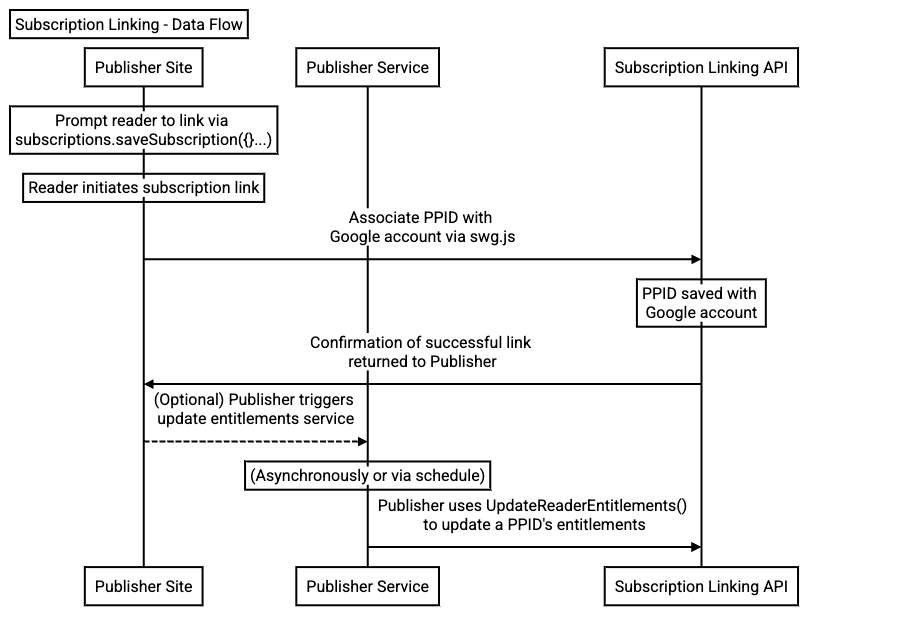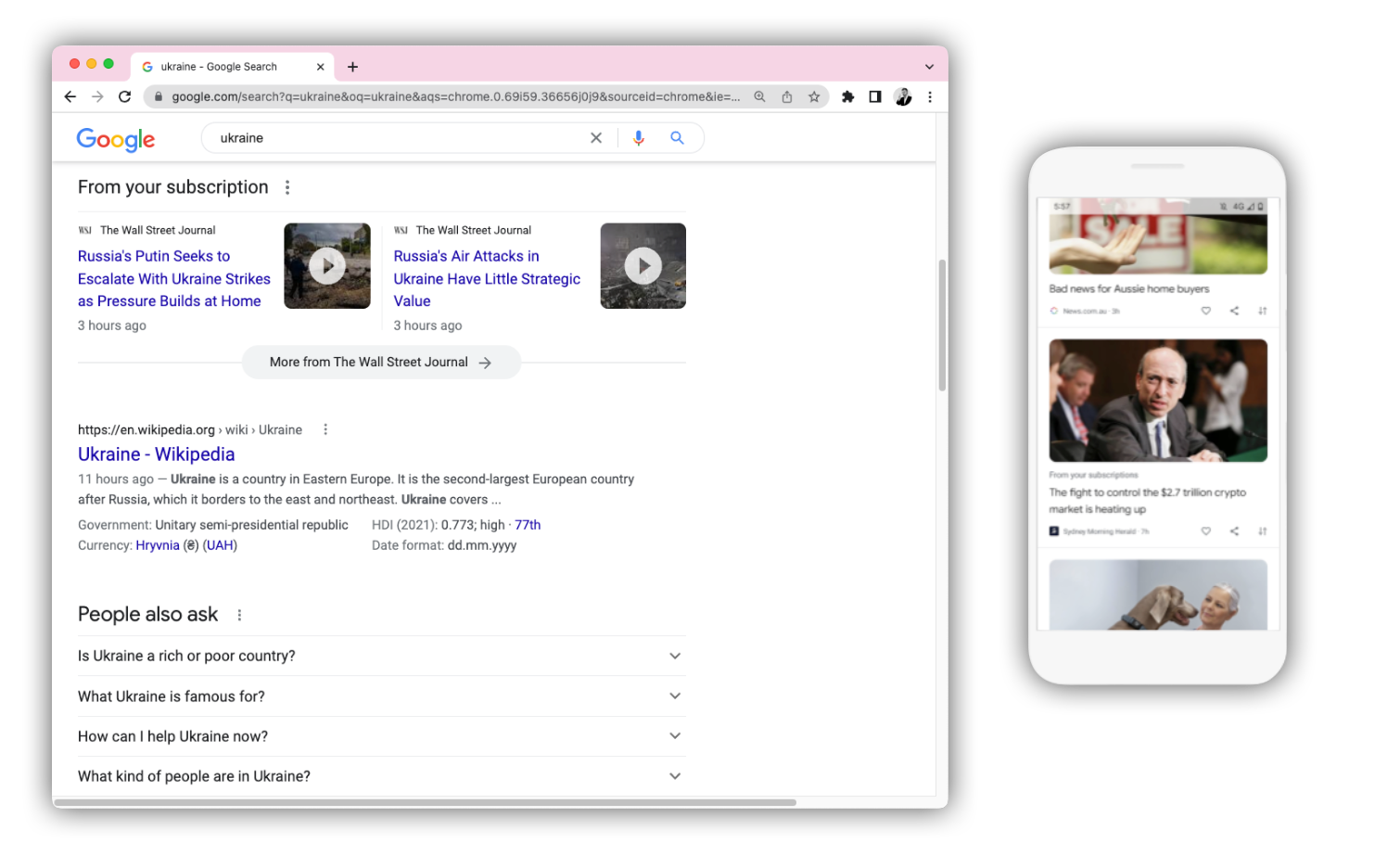
Figura 1. Diagramma di sequenza relativo al flusso di dati di alto livello del processo di collegamento degli abbonamenti.
Per implementare il collegamento degli abbonamenti, sul sito di un editore è necessario usare il codice JavaScript lato client per iniziare il collegamento per i lettori e un servizio lato server per gestire i diritti dei lettori. Entrambi questi sistemi utilizzano le informazioni della pagina web ospitata, la configurazione del Publisher Center della tua pubblicazione e i dati dell'account di servizio Google Cloud.
Procedura per collegare un abbonamento
- Un lettore con un diritto di contributo o abbonamento a pagamento visita il tuo sito web.
- Il codice lato client utilizza
swg.jsper offrire al lettore la possibilità di collegare il suo account al suo Account Google tramite un pulsante o un invito all'azione che progetti e inserisci nel tuo sito web, affinché possa usufruire dei vantaggi dell'associazione. - Dopo aver attivato l'invito all'azione (in modo esplicito tramite un clic o in modo implicito come risultato di un'altra azione o stato), il lettore accede al proprio Account Google (o ne seleziona uno attivo) e concede l'autorizzazione all'editore di associare le informazioni del lettore al suo Account Google. Nell'ambito della richiesta, l'editore crea per il lettore un identificatore fornito dal publisher (PPID) che viene salvato nell'Account Google del lettore e utilizzato per le successive interazioni con l'API.
- Dopo aver concesso l'autorizzazione, il lettore viene reindirizzato al sito dell'editore. Ora l'editore può comunicare a Google i diritti che ha il lettore.
- (In modo asincrono) Gli editori inviano a Google informazioni relative a ogni lettore che ha collegato il suo account tramite i relativi PPID al fine di aggiornare il record di Google dei diritti del PPID. Il record di Google dei diritti di un PPID deve essere mantenuto aggiornato, perché questi record vengono eliminati se diventano inattivi. Un record diventa inattivo 30 giorni dopo la data di scadenza e viene poi eliminato definitivamente.
Vantaggi
Se un lettore visita il sito di un editore che ha integrato il collegamento degli abbonamenti e ha pagato un abbonamento o dato un contributo su questo sito, può collegare il proprio account editore al proprio Account Google. Questi lettori sono quindi idonei ad avere una maggiore visibilità sui contenuti di questa pubblicazione sui prodotti Google, ad esempio la Ricerca e Discover. In questo modo, i lettori possono massimizzare il consumo dei contenuti delle pubblicazioni che hanno pagato. I lettori possono scollegare il proprio account editore dal proprio Account Google in qualsiasi momento o tramite un'azione fornita dall'editore.
Riepilogo dei vantaggi per i lettori
- I lettori cercano contenuti, notizie o altri tipi di contenuti e vedono l'elenco "Dai tuoi abbonamenti".
- I lettori interagiscono con Discover (tramite la schermata Home di Android oppure su iOS nell'app Google, su Chrome o tramite un widget nella schermata Home) e possono vedere "Dai tuoi abbonamenti" come sezione di Discover.

Figura 2. Screenshot del modulo "Dai tuoi abbonamenti" in una pagina dei risultati di ricerca su computer e dispositivi mobili.
Vantaggi di un abbonamento collegato per un editore
- Configurazione lato server resiliente più efficiente e più a lungo termine per la gestione degli account
- Non è necessario creare un endpoint dei diritti e un IdP OAuth pubblico, come era invece necessario nelle versioni precedenti di Account Linking.
- Maggiore coinvolgimento e fidelizzazione degli utenti grazie alla visualizzazione più chiara dei contenuti della pubblicazione all'interno delle pagine dei risultati del motore di ricerca di Google.
